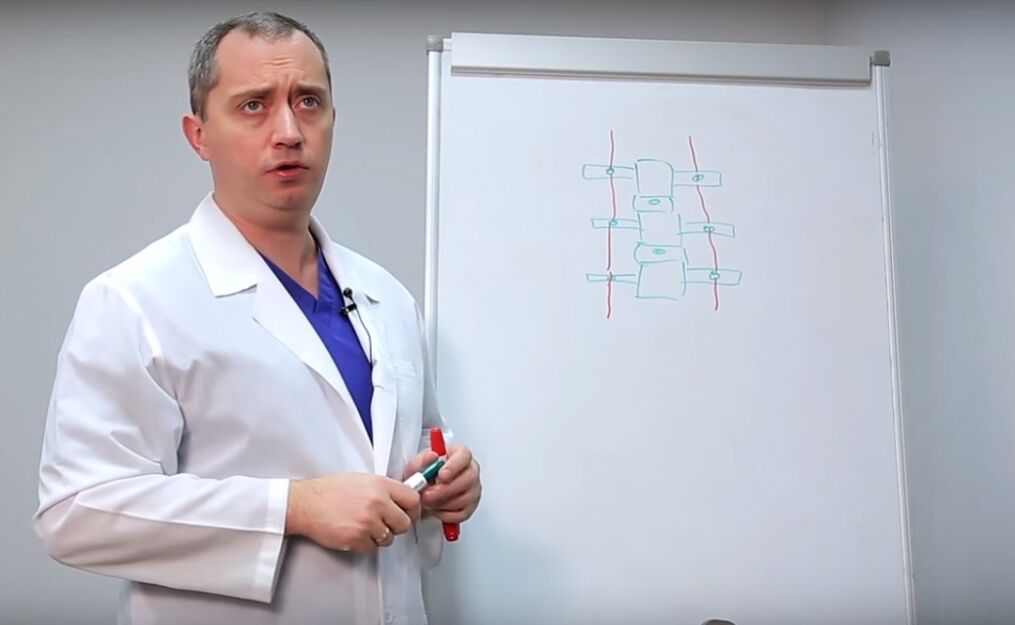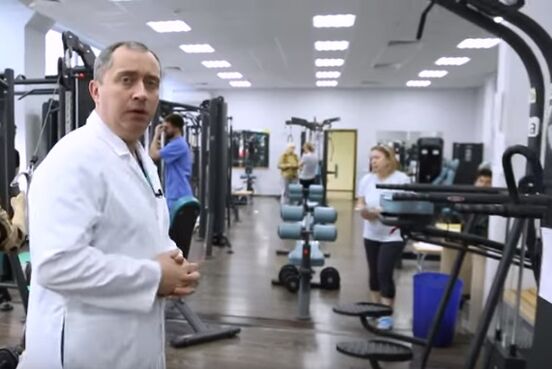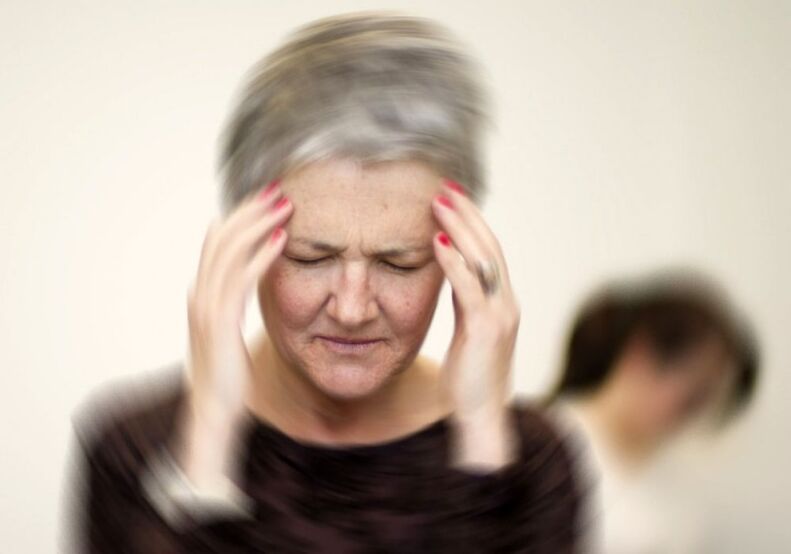The osteochondrosis of the cervical column is a pathology, which is characterized by the development of destructive depth processes in the tissues of the articular cartilage.These phenomena are developed due to the physiological weakening of the nutrition of the intervertebral discs, which leads to the fact that the tissue of the regenerate cartilage (restored) even after a minor microtic of the spine.
Most patients, especially the main inactive lifestyle, constantly load the muscle corset of the neck, since they are forced to remain in the same possess for a long time.All these factors contribute to the development of the disease.
Attention.Cervical osteochondrosis is one of the most dangerous diseases for health and even human life.This is due to the fact that a large number of vital vessels are concentrated in the neck.
A bit of anatomy
In the structure of all the vertebrae of the lumbar, thoracic and cervical parts there are transverse processes.
In the thoracic region, the ribs are linked to the transverse processes.The bodies of the lumbar segment vertebrae are the largest, since this department has a significant mass.The deep muscles of the lower back are attached to the transverse processes of the lumbar vertebrae.Among the vertebrae there are elastic cartilage (discs).

STRUCTURE CHARACTERISTICS
The cervical column is characterized by some anatomical characteristics.Specialists focus the audience's attention that only in the transverse processes of 1-6 cervical vertebrae there are holes through which the vessels that feed the basal section of the brain (brain stem).
The basal brain department can be considered as a "computer center", in which the data is collected and analyzed from the entire body.The organ presented controls all automatic processes in the body (movement, breathing, temperature, coordination, heartbeat, sweating, etc.).
Doctor Council.If cervical osteochondrosis has diagnosed and the treating doctor tells him that this makes no sense and that this pathology can be cured with ointments and some lotions, then it is better to get out of a doctor as far as possible.
Osteochondrosis pathogenesis
With cervical osteochondrosis, the vertebrae of the vertebrae is observed with each other, which leads to the compression of the arteries.Compression of these glasses can cause an ischemic blow to the brain.Such phenomena are completely fixed.
If a person has a small cervical osteochondrosis, but no one treated or treated it incorrectly, with minimal mechanical effects, the displacement of the vertebrae is observed, the blood circulation is altered, the patients often complain about dizziness and nausea.After a while, the patient loses consciousness.This is often found in people who have injured in an accident.

Clinical signs of the disease
With the development of cervical osteochondrosis, the following symptoms are observed:
- greater sweating;
- Weakening of the muscle frame;
- Numbness of the hand;
- greater fatigue;
- loss of consciousness;
- hypertension;
- nausea and dizziness;
- Posture problems;
- insomnia;
- limited movements;
- Irrazonable bad mood;
- chest pain;
- a feeling of running chicken skin in the body;
- When turning your head, a crunch is heard;
- Dolores in bones and chills;
- Sharmed pain and neck pain;
- violation of coordination;
- Problems with vision and audition.
Advice!By identifying the above characteristics, you must communicate with an experienced specialist: therapist, neuropathologist, vertebrologist, traumatologist, cardiologist or surgeon.After an exhaustive diagnosis, the doctor can diagnose and choose the optimal tactics of the treatment.

Complications
The degenerative-dystophical processes in the fabrics of the Veria column violate the functional activity of this organ.In a nutshell, there is a "wear" column:
- limited mobility of the spinal column;
- decrease in the height of the intervertebral discs;
- the formation of a hypothalamic syndrome;
- respiratory arrest due to the damage to the spinal cord;
- violation of blood flow in the spinal cord;
- Violation of the swallowing reflex;
- dysfunction of internal organs;
- nerve compression;
- disk loss;
- breathing violation;
- spinal deformation;
- vestibular disorders;
- Neurocirculatory dystonia;
- shoulder periarrosis;
- thyroid dysfunction;
- Epicondalite;
- stenosis of the intervertebral channel;
- The formation of protuberances and intervertebral hernias.

Note!All these complications require immediate help, are related to dangerous conditions that worsen not only the quality of the patient's life, but can also cause their death.
The doctor also points out that with the osteochondrosis, a stroke is sometimes observed.In this case, the brain is affected and, in reality, all the regulation of the body's work is disturbed.In the holes of the transverse processes of the vertebrae, not only the vessels, but also the nerves.When the vertebrae move, they also pinch.Because of this, the muscle weakness of the hands, complete or partial of its paralysis is observed.
Very often, patients turn to traumatologists, since they have a shoulder, take photos, undergo a physiotherapy course (massage, electrotherapy, etc.), and pain syndrome is not eliminated.
When contacting a specialized clinic, the institution's specialists first perform a comprehensive exam and only then, based on the results, appropriate treatment is prescribed.With a slight tight of blood vessels, blood flow in the brain is altered, which causes the development of arterial hypertension.In 95% of cases, hypertension develops due to the compression of blood vessels with osteochondrosis.

Doctors developed special exercises that are aimed at the decompression of blood vessels and nerves, the restoration of the functions of the muscle device-light of the neck.
If the patient is diagnosed with cervical osteochondrosis, it is recommended to perform at least three exams:
- Radiography.With your help, information about the condition of the cervical column segment is obtained.The images must be carried out in 2 projections and airplanes.In addition, this method allows you to establish the mobility of damaged vertebrae, the displacement of your bodies, the presence of salt deposits and the appearance of neoplasms.
- Doplerography or dopplerometry.It allows you to evaluate the permeability of the blood vessels using a blood flow program.During the procedure, the patient is installed special sensors in places of the supposed location of sponsorship.
- MRI of the cervical column.This is perhaps the most informative, painless and precise diagnostic method.Using this method, not only the presence of the disease is revealed, but also the degree of its gravity.
Conclusion
Osteochondrosis is a very insidious and dangerous disease.It is extremely difficult to diagnose this pathology in the early stages of pathogenesis, since it happens almost asymptomatic.With the progression of the disease, many signs are confused, since problems with blood flow can cause suspicions of disorders in the field of the heart.Therefore, doctors recommend, with the most gifted manifestations of pain in the cervical column, immediately contact specialists.This will allow you to get rid of problems in the early stages and avoid the development of various types of complications.













































